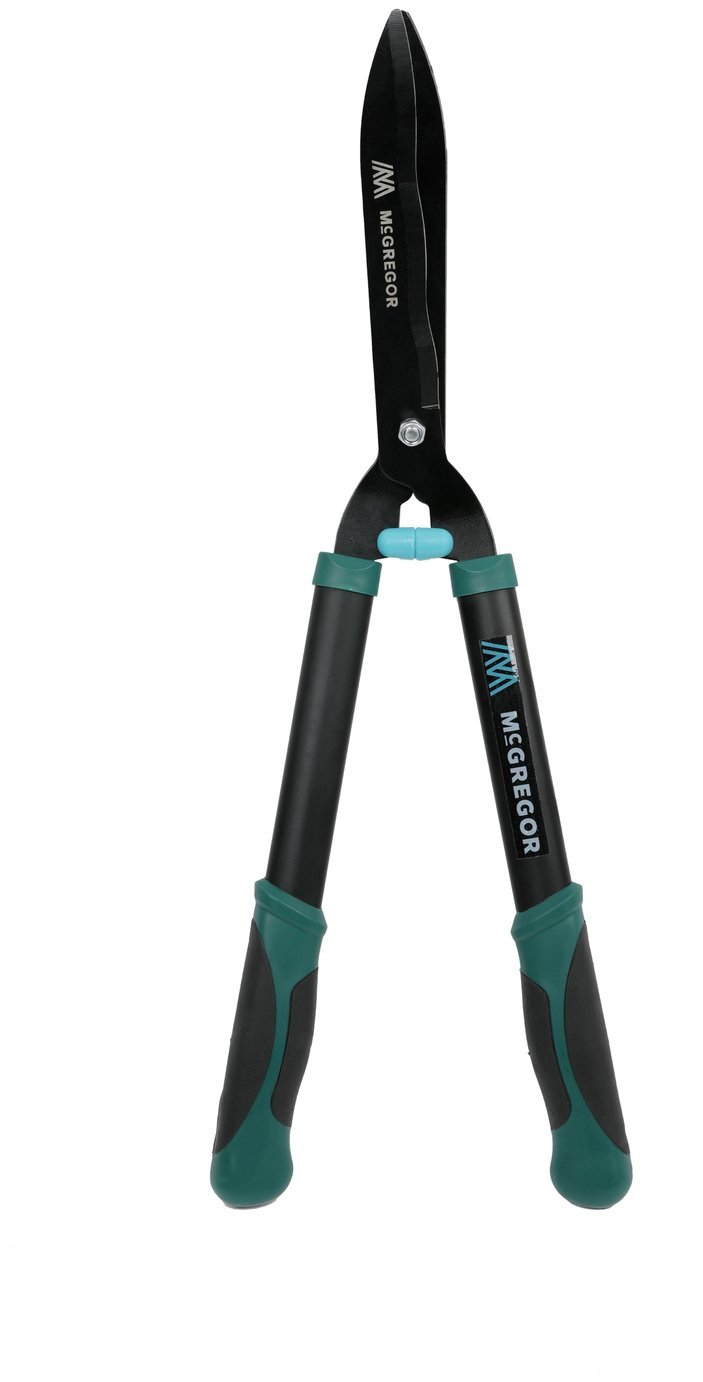7 perennials to cut back in June – experts say giving these plants the Chelsea chop will encourage a second flush of flowers
Add this to your to-do list to give your garden an early summer refresh and encourage more blooms later on


Early summer is when our gardens are just getting into their stride, so the thought of cutting plants back can feel counterintuitive. But give key plants a light prune now, and your garden will look all the better for it, so knowing which perennials to cut back in June is a must.
Perennials grow quickly in spring as temperatures rise and daylight hours increase, and this year’s unseasonably warm weather sees our outdoor spaces already bursting with colour. Cutting back long-flowering perennials now will not only ensure that plants remain compact and less likely to need support but will encourage fresh foliage and late summer flowering too.
'June is a brilliant time to give some perennials a light trim,’ says Elise Harlock, Brand Manager at Prestige Flowers. ‘Think of it as a summer refresh that encourages a second flush of flowers and keeps the garden looking neat and tidy. Cutting back helps the plant focus its energy on producing new growth, rather than going to seed or getting leggy.’

Elise Harlock is the Brand Manager at Prestige Flowers, one of the UK’s leading online florists. With a strong background in horticulture and years of experience in the floral industry, Elise is a trusted voice in the gardening world. Her expert tips have been featured in numerous titles and she regularly shares advice on everything from seasonal planting to common garden mistakes.
What to cut back and how much
So, the big question is which are the best perennial plants to cut back in June and by how much.
‘Eliminate spent flower heads and trim back stems by about a third, but don’t be too harsh,’ advises Elise. ‘The aim is to tidy and encourage, not cut the plant to the ground. Always check for fresh shoots at the base before cutting.’
‘Cutting back perennials by 1/3 to 1/2 in early summer stimulates the plant to branch out, resulting in bushier growth,’ says Julian Palphramand, Head of Plants at British Garden Centres.
‘It can also stagger and extend the flowering season for many more weeks. Removing old or spent growth helps prevent disease and allows better air circulation, promoting healthy plant growth. It also keeps your plants neat, preventing bolting or leggy growth.’
Sign up to our newsletter for style inspiration, real homes, project and garden advice and shopping know-how
1. Geraniums (hardy cranesbill)
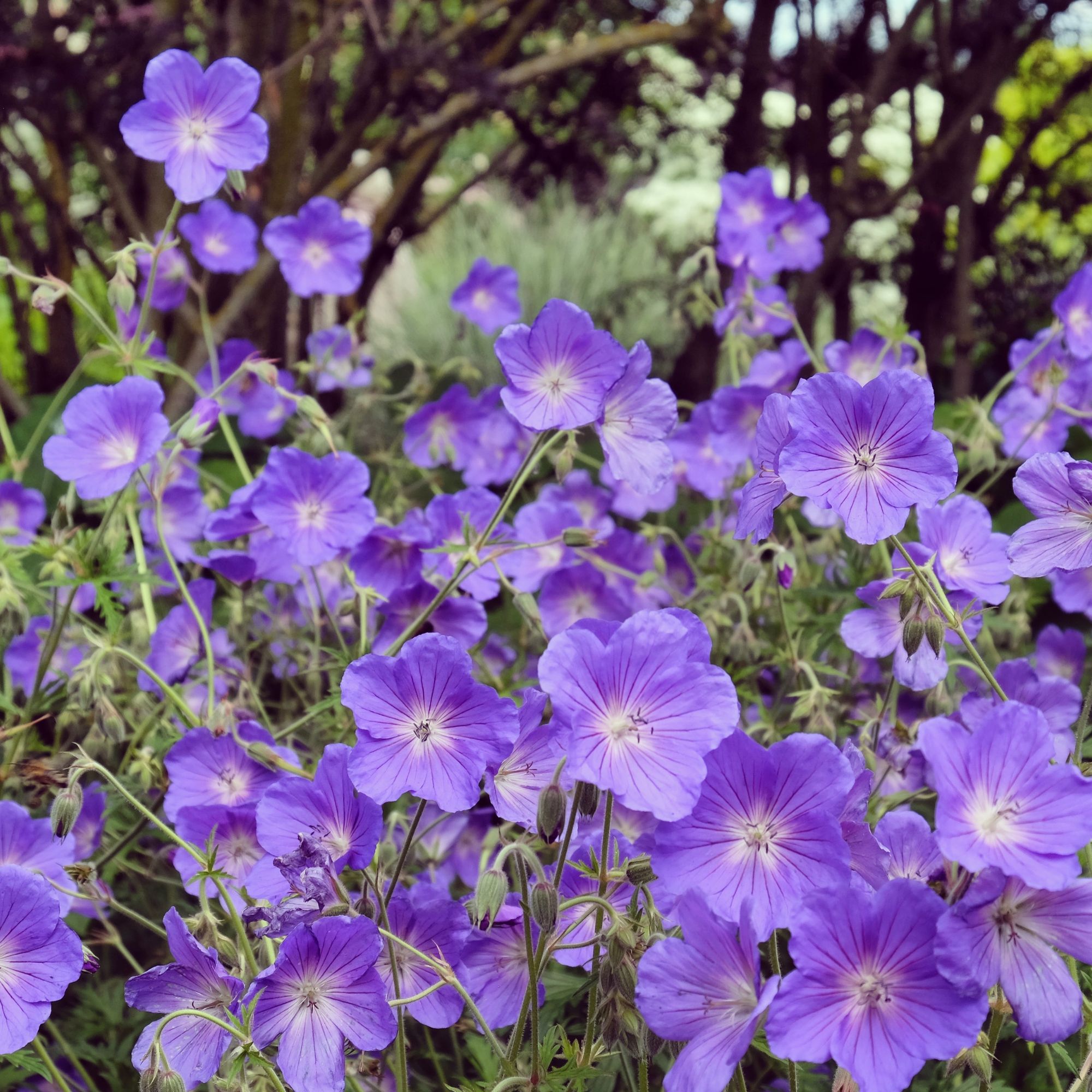
'By June, many spring-flowering perennials have finished their first show. Cutting them back removes fading blooms and tired foliage, which encourages fresh growth and sometimes even a second wave of flowers later in the season,’ advises Elise.
‘Cut hardy geraniums (commonly known as cranesbill geraniums) back by half to encourage a second flush,’ says Elise.
Pruning can be done as soon as the main blooms start to fade. Simply take your shears and cut off the foliage. While it might look drastic, plants will produce fresh foliage and more flowers in the same summer for more fabulous garden border ideas.
Where to buy hardy geraniums:
- Thompson & Morgan: Try the long-flowering and violet-coloured Geranium 'Rozanne', from £9.99
- Crocus: The pretty Geranium Dreamland, from £11.99 has masses of pale pink blooms.

Julian Palphramand is Head of Plants at British Garden Centres. He was previously Horticulture Buyer at Wyevale Garden Centres and has extensive knowledge of various plants and advice on the best approaches to growing them.
2. Alchemilla mollis (lady’s mantle)

‘Always make sure you use sharp, clean secateurs or shears when pruning to make clean cuts and avoid spreading disease,’ advises Julian. ‘Check for nesting birds or other wildlife in your plants before you start. Focus on cutting back spent flower stalks or the top growth. Cut back to 1/3 to 1/2 of their current height and always leave some healthy foliage to support the plant’s energy needs.’
‘To cut back alchemilla mollis, deadhead the perennials' spent flower heads and neaten the leaves to stop it self-seeding everywhere,’ advises Elise. Water well after cutting back to promote new growth, especially if the weather is dry.
Where to buy alchemilla mollis:
- Sarah Raven: Go for the fluffy-flowered Alchemilla mollis, £12.95.
- Thompson & Morgan: Stock up on Alchemilla mollis 'Thriller', from £9.99 with its lime-green blooms.
3. Lupins
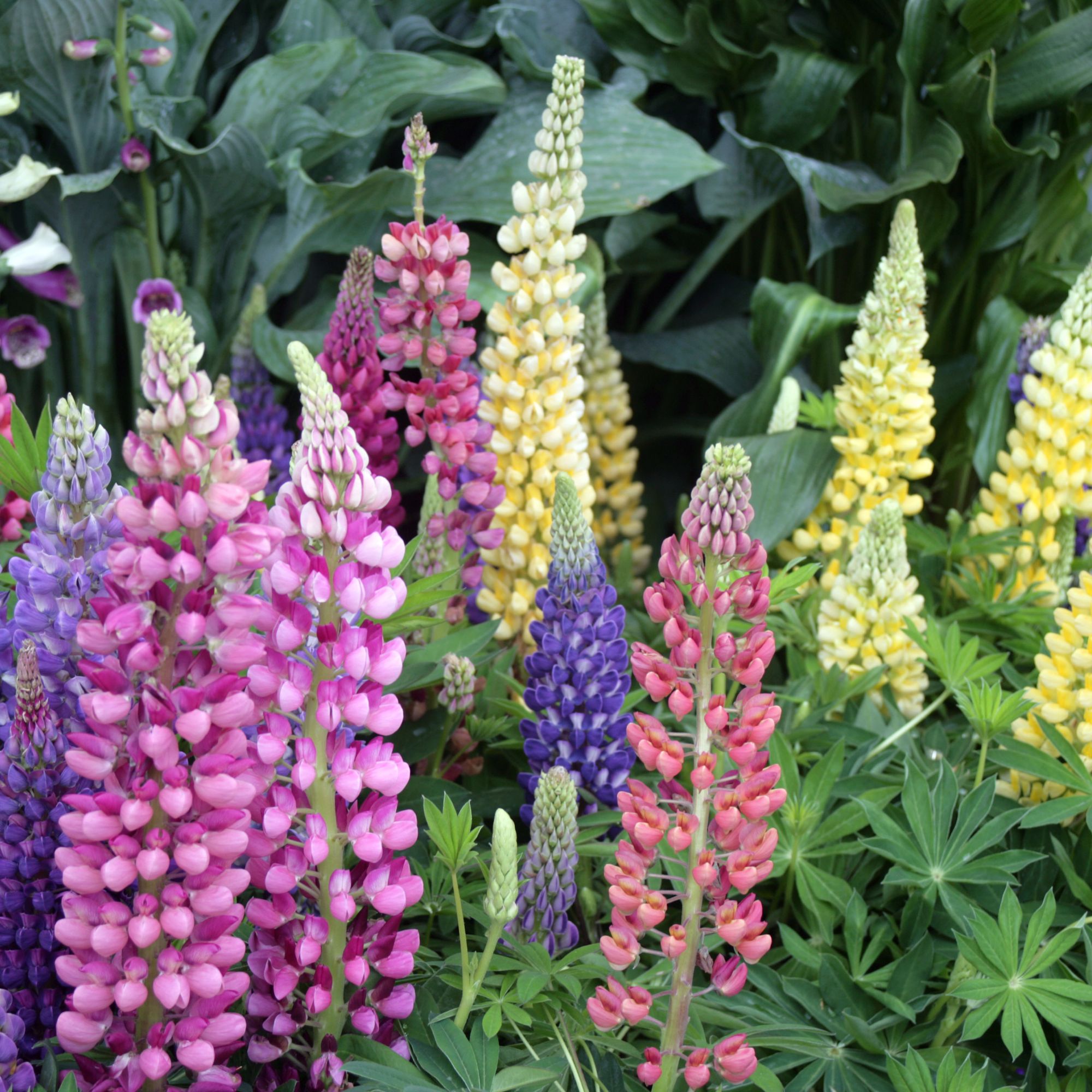
‘Cut off faded flower spikes to encourage side shoots and more blooms,’ advises Elise. Cut the spent flower stalk down to ground level or a point just above a new bud or leaf joint.
‘If you leave spent flowers and seed heads, many perennials will self-seed everywhere - great if you love wild, cottage look flower bed ideas, but not ideal for a neat, controlled border. Some plants can also become woody or straggly if not cut back, so a June tidy-up helps keep them healthy and vigorous.’
Where to buy lupins:
- Suttons: Go for the multi-coloured Lupin 'Russell Hybrids Mixed', from £9.99.
- Dobies: Try these one-colour Lupin Gallery White, from £9.99, with its fragrant blooms.
4. Nepeta (catmint)

‘Don’t be afraid to experiment - plants are surprisingly resilient, and a mid-season trim can give your borders a real boost,’ says Elise.
Nepeta (commonly known as catmint) is one of the best plants for bees and pollinators. But it can get quite leggy or flop open at the centre, so cutting it back after flowering will help to keep it neat and encourage a bushier plant.
‘Trim Nepeta by a third to keep it compact and avoid flopping,’ advises Elise. Cut all round, from the sides and from the top. It will look quite stemmy initially, but after a week, it should bounce back, and you will soon see new growth.
Where to nepeta:
- Thompson & Morgan: In a mix of colours, Nepeta 'Panther Mix', from £16.99 are super pretty.
- Suttons: The petite Nepeta x faassenii 'Kit Kat', from £19.99 is great for edging.
5. Aquilegia (granny’s bonnet)

Once aquilegia plants are established, they need very little aftercare. They will often self-seed in the right conditions, which can be useful if you want to fill a new border, but not if you like to maintain a more orderly display.
‘Snip back aquliegia after flowering to keep it tidy and prevent rampant self-seeding,’ advises Elise. Cut down to ground level and water thoroughly to encourage new growth.
If you want to collect seeds, pop the seedheads into a paper bag and once fully dried, shake them to release the very tiny seeds from inside. Pop the seeds into a paper envelope and store in a cool, dry place.
Where to buy aquilegia:
- Thompson & Morgan: Add a pop of crimson colour with Aquilegia caerulea Crimson Star, £14.99.
- Crocus: Try the pure white flowered Aquilegia vulgaris 'Nivea', £9.99 in a cottage-garden border.
6. Echinacea (coneflowers)
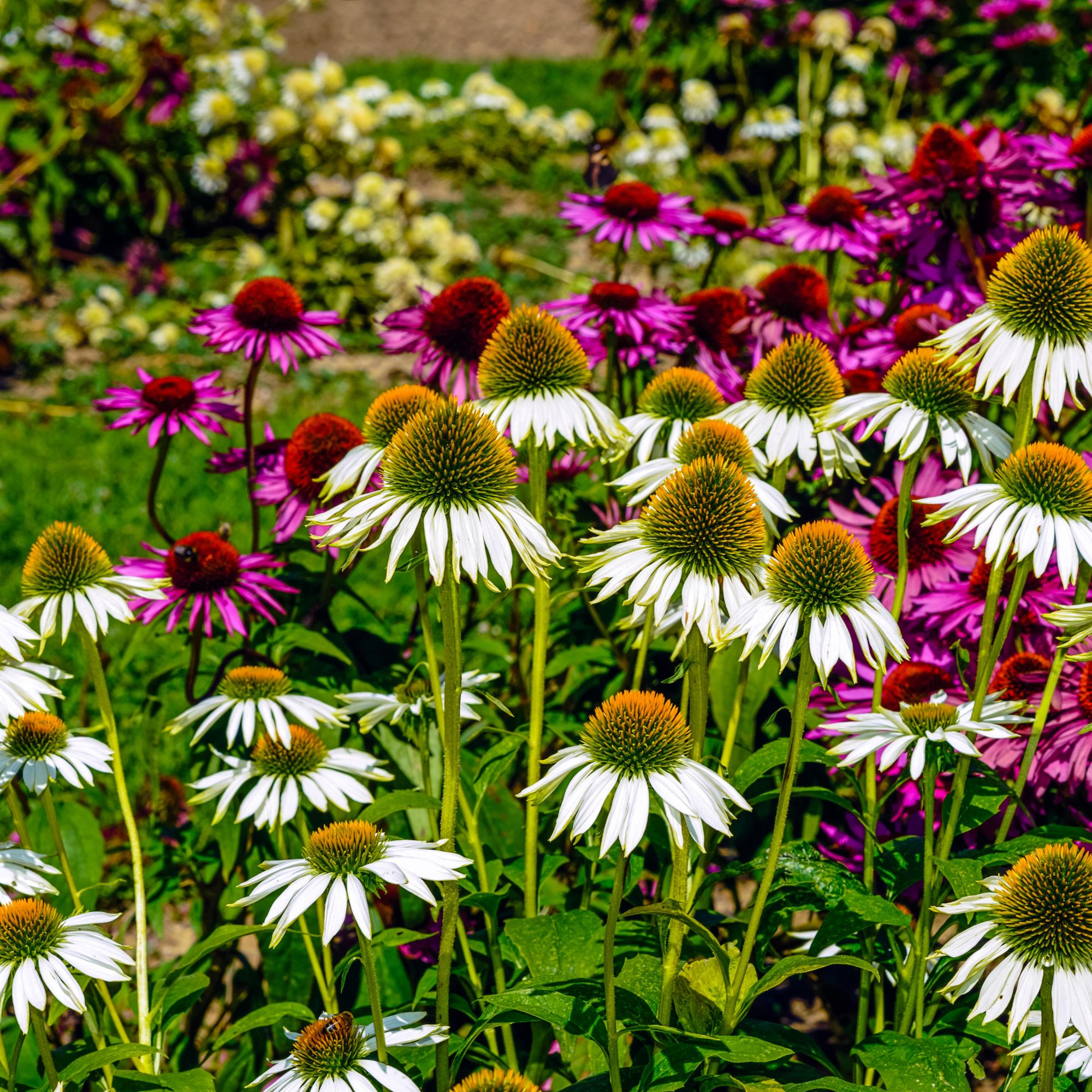
‘A wide range of perennials respond well to being cut back in June,’ says Julian. ‘These include echinacea, phlox, penstemon, sedum, aster, helenium, achillea, campanula, coreopsis, rudbeckia, leucanthemum, geranium and pelargoniums.’
Echinacea - also known as coneflowers due to the central cone in the middle of the daisy-like petals - is an easy to grow perennial from seed and great for cottage-style borders or prairie-style planting schemes.
To encourage more flowering, deadhead coneflowers regularly by cutting off the faded blooms before they produce seeds. On plants that you’ve had for at least a season, cut some of the stems back by half in June to delay flowering on those stems. The uncut stems will flower first, followed by the cut stems later in the summer.
Where to buy echinacea:
- Gardening Express: Go for the dramatic dark pink tones of Echinacea 'Fatal Attraction', £12.95.
- J. Parker's: Try the zinzy orange blooms of Echinacea 'Skipper Orange', from £7.99.
7. Achillea (yarrow)
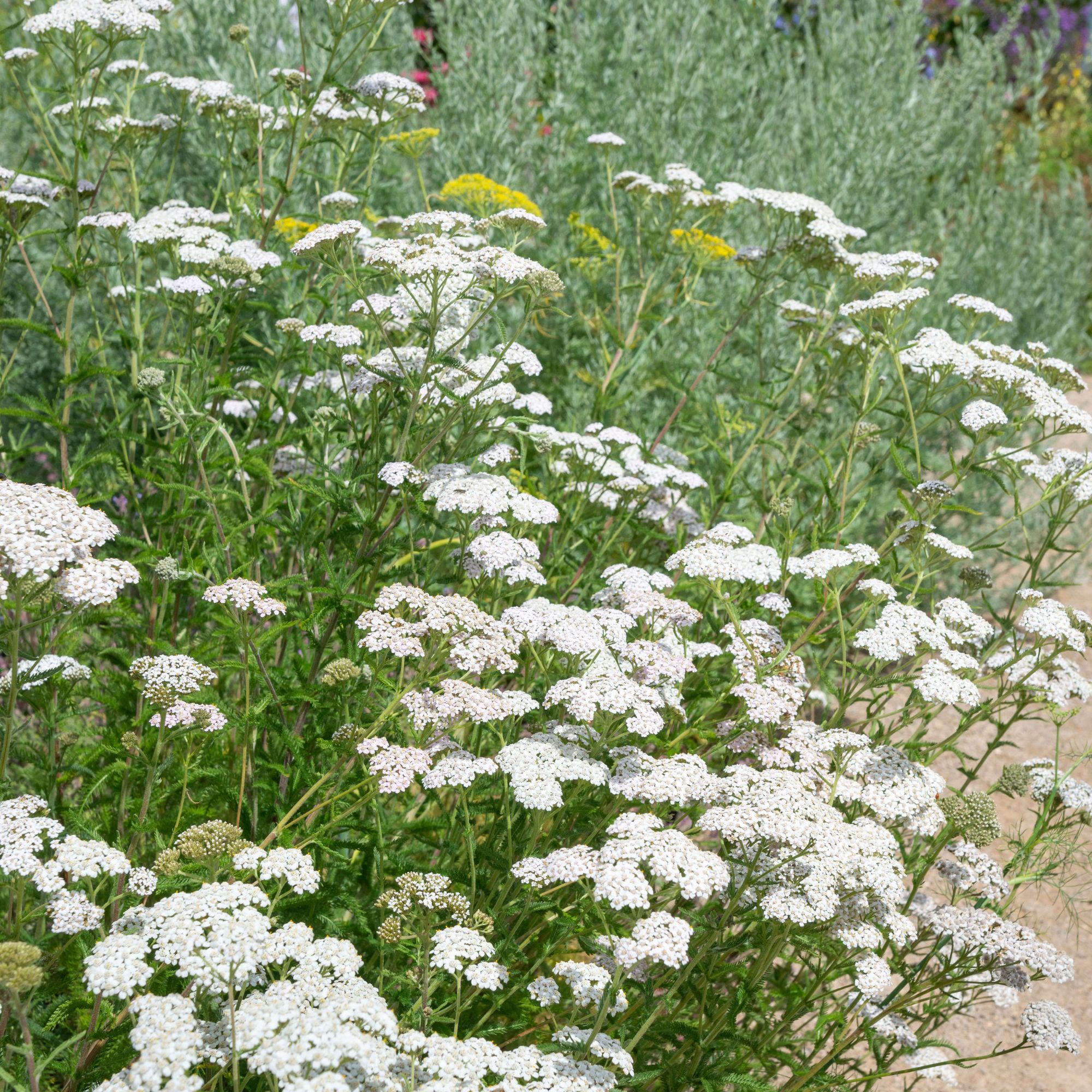
Achillea (or yarrow) is an easy-to-grow perennial that will bloom throughout the summer. With umbrella-shaped cluster flowers and feathery foliage, it's a great low-maintenance border plant and can help give structure.
Deadheading the flowers in early summer can encourage a second flush of growth and blooms that can extend into autumn. Cut back as each cluster fades and before it begins to go to seed and spreads over the garden. Take secateurs, like these ones from Amazon, £12.95 and snip halfway down the stem, which will keep the plant looking neater and avoid it wasting energy on seed production
Where to buy achillea:
- Primrose: Go for the super-pretty Achillea Millefolium Cerise Queen, from £8.99.
- Thompson & Morgan: The multi-coloured Achillea millefolium 'Summer Berries', from £9.99 has masses of tiny flowers.
What you'll need to cut back perennials
FAQs
Is June too late to prune?
‘Don’t cut back too late or too early, as it can impact flowering. We recommend that late May to early June is generally the best window for pruning perennials, and that you give the plants a thorough watering after cutting to help them recover,’ advises Julian.
Can I divide perennials in June?
Timing is key when it comes to dividing perennials. It is generally recommended to divide summer-flowering perennials between early spring (March to May) or autumn (September to November), before the frost sets in.
This is when the weather is cooler and the plant is not under stress from the summer heat. Early spring allows plants to settle before the growing season and autumn divisions give plants time to establish roots before winter.
Spring-flowering perennials are best divided in summer (June to August) after flowering, when they produce new roots.
Cutting back key perennials now will refresh your garden and get it looking neat and tidy, as well as helping plants focus on new growth for later in the season. Will you be adding it to your early-summer to-do list?

Lisa is a freelance journalist who has written about interiors for more than 25 years. Previously editor of Style at Home magazine, she has worked on all the major homes titles, including Ideal Home, Country Homes & Interiors, 25 Beautiful Homes and Homes & Gardens. She has covered pretty much every area of the home, from shopping and decorating, crafts and DIY to real homes and makeovers and now regularly writes gardening stories for Ideal Home.

